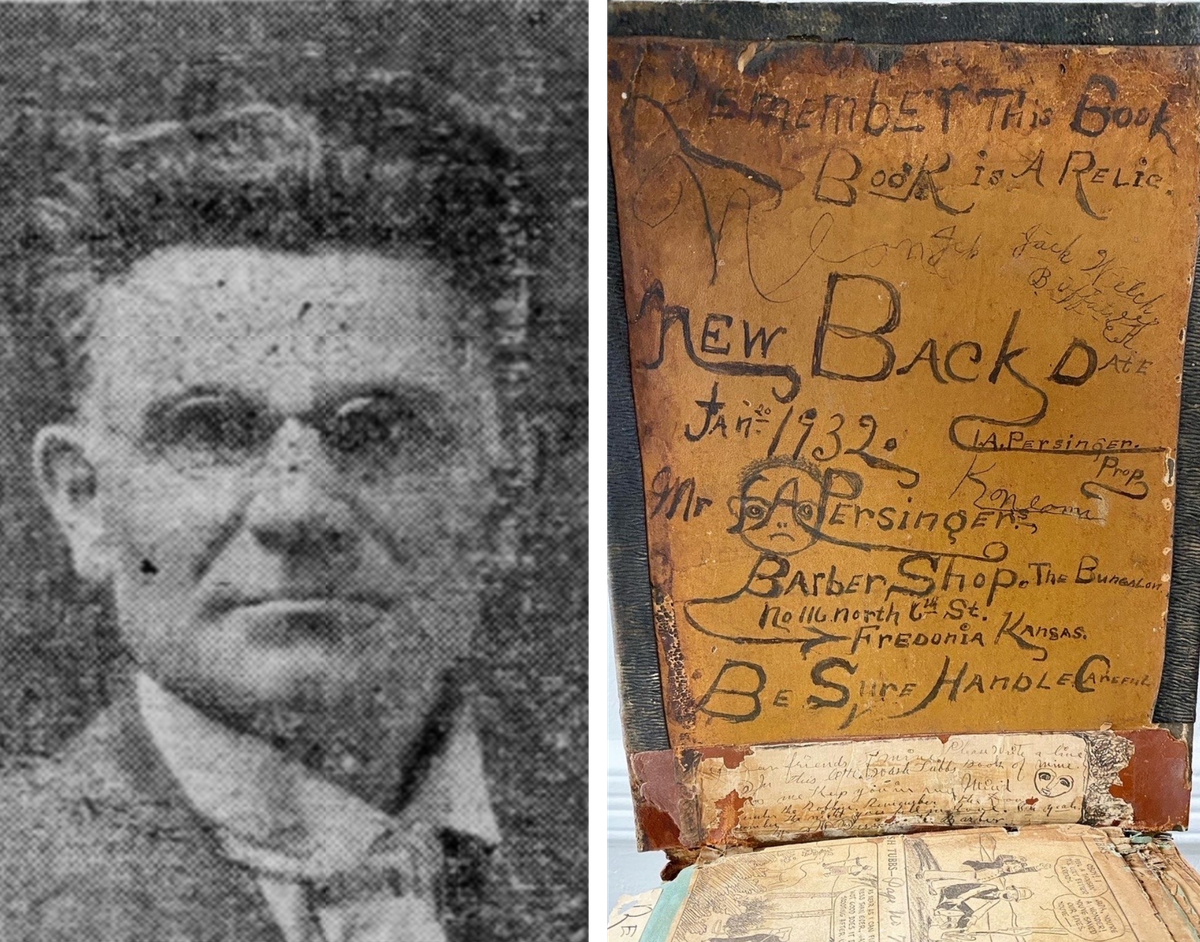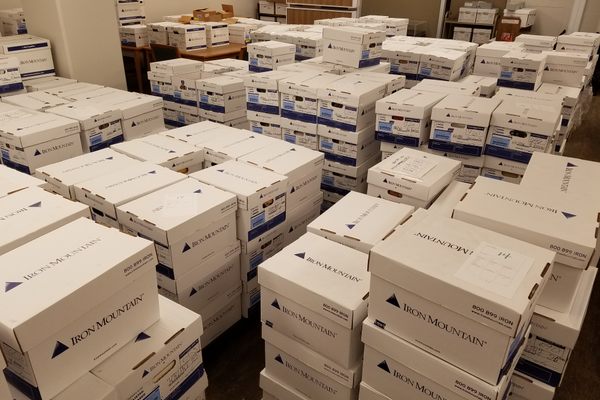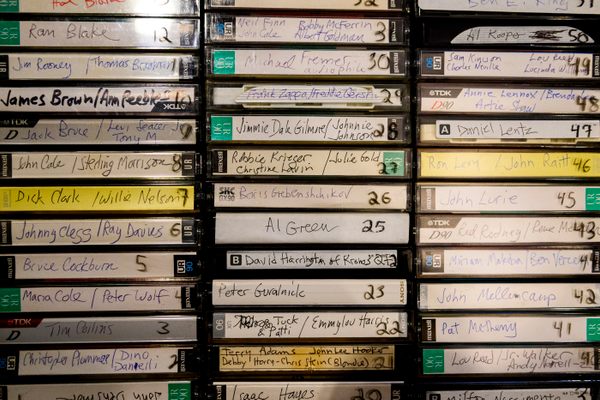The 36-Pound Comic Scrapbook That Chronicles the Great Depression
How the collection went from a small-town barbershop to a big-time library.
“Dear friends of mine, Please write a line / In this little Wash Tubbs book of mine. / Help me Keep you in my Mind”
So begins the inscription on the spine of a hulking tome that was once a source of idle amusement for clients at the Bungalow, a barbershop in Fredonia, Kansas. In 1928, the barber, I.A. Persinger, began compiling this collection of “Wash Tubbs” comics, a well-loved daily newspaper strip by artist Roy Crane, whose adventure graphics popularized the visual sound effects—Bam! Pow!—we know so well today. Soon, though, the scrapbook expanded with handwritten insights from Persinger and his customers on life during the Great Depression.
Today, almost 100 years later, Persinger’s scrapbook has found a new home, one its creator probably never envisioned—a place among the rare books and manuscripts of the Columbia University Libraries. The unusual artifact was acquired by Karen Green, the school’s Curator for Comics and Cartoons, whose expanding collection makes the case that the funny pages and other cartoon creations are worthy of serious study. In the Persinger scrapbook, she sees a portal to the past. Atlas Obscura spoke with Green about this serendipitous find and the cultural significance of comics.

What makes the Persinger scrapbook one of a kind?
It is more than just a comic-strip collection. Some pages have messages written between or below the comics, sometimes writing directly over them. Many commenters seemed to like to rhyme. Persinger began to add drawings, and sometimes he would write metaphysical observations about the universe or refer to the progress of the Depression. When he filled all the pages in the original book, he started adding additional pages—to a total of over 800. At the moment, it’s bound by two spikes, which makes opening it a tricky proposition.

What have you uncovered so far about its history from examining it?
On the back endpaper, which has deteriorated quite a bit, Persinger writes what should be done with the book, but it’s not all legible: “This Book Goes to My Grand…” / …el A. Cline / Elk Co. Moline Kansas.” After I wrote a blog post about it, I got an email from the cartoonist David Lasky, who had been inspired to do some genealogical research. Persinger had a daughter named Hattie, whose married name was Cline. She lived in Moline, which is in Elk County, and had a son named Myrel. So that allowed us to fill in some of the blanks.
There’s also a page which has nothing but customer messages, all of which are dated. They’ve written where they’re from—and most are from Moline. Moline is about 50 miles from Fredonia, so Persinger’s barbershop clearly had some reach!

How do you find pieces for the collection?
There’s a real variety in how materials come to the Rare Book & Manuscript Library. Sometimes the owner of the collection approaches us; sometimes the owners are people we really want in the collection and we take a chance on reaching out to them. But in the case of the Persinger scrapbook, it was a social media miracle!
A friend I know almost solely from Facebook and Instagram tagged me in the comments of an Instagram account run by a sculptor and collector named Eric Oglander. Eric had bought the scrapbook at auction and listed it on his account, but was not yet offering it for sale. He offered me a chance to come out and look at it. I did, and it was glorious. Happily, I had just about the exact amount left in my funds, but we didn’t have a budget for conservation. I mentioned this on Facebook, and Maggie Thompson [comics collector and editor of the now-defunct Comics Buyer’s Guide] donated the conservation costs.
What can we learn from the study of comics and cartoons, and of this scrapbook specifically?
Comics can be terrific conveyors of social norms, political movements—reflections of the concerns of the day. There are so many avenues of research that the Persinger scrapbook offers, from social history to rural social networks to outsider art. I’m also hoping, as we explore deeper in its pages, that we find messages that comment directly on the “Wash Tubbs” strips, which will speak to the reception of comics in daily life.

What will the conservation process be like, and what do the conservators most need to consider?
We had to determine what made the most sense — to disbind the book and separate it into more manageable chunks? Remove the spikes and replace them with something more flexible? In the end, we agreed that preserving the scrapbook as an artifact was of the greatest importance, so conservators will disbind the book in order to digitize the pages, and then reassemble it.
While the book is disbound, the first 20 or so pages, which are brittle from seeing the most use, will undergo preservation treatment. When the book is reassembled, we’ll really have to rely on the digitized images (which will likely be available only on in-library-use servers due to copyright issues). But none of this work is likely to be finished until sometime in 2022.
This interview has been edited for length and clarity.






















Follow us on Twitter to get the latest on the world's hidden wonders.
Like us on Facebook to get the latest on the world's hidden wonders.
Follow us on Twitter Like us on Facebook